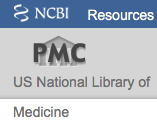Antimicrobial Silver Nanoparticles for Wound Healing Application: Progress and Future Trends.
Federica Paladini and Mauro Pollini
Abstract
Recent data have reported that the burden of infections related to antibiotic-resistant bacteria in the European Union and European Economic Area (EEA) can be estimated as the cumulative burden of tuberculosis, influenza, and human immunodeficiency virus (HIV). In wound management, the control of infections represents a crucial issue and a multi-billion dollar industry worldwide. For diabetic wounds ulcers, in particular, infections are related to the majority of amputations in diabetic patients, which today represent an increasing number of the elderly. The greatest barrier to healing is represented by the biofilm, an organized consortium of bacteria encapsulated in a self-produced extracellular polymeric substance with high resistance to conventional antimicrobial therapies. There is an urgent need for novel anti-biofilm strategies and novel antimicrobial agents and, in this scenario, silver nanotechnology has received tremendous attention in recent years in therapeutically enhanced healthcare. Due to its intrinsic therapeutic properties and the broad-spectrum antimicrobial efficacy, silver nanoparticles have opened new horizons towards novel approaches in the control of infections in wound healing. This review aims at providing the reader with an overview of the most recent progress in silver nanotechnology, with a special focus on the role of silver in the wound healing process.

* THESE STATEMENTS HAVE NOT BEEN EVALUATED BY THE FOOD AND DRUG ADMINISTRATION. THIS IS NOT INTENDED TO DIAGNOSE, TREAT CURE OR PREVENT ANY DISEASE.